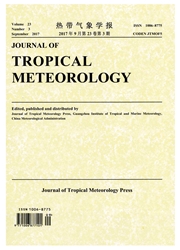

 中文摘要:
中文摘要:
为上海,在更早的时间有强烈 Mei-yu 降雨样品 above500 公里和许多研究的很少记录。为这篇论文是可得到的的,仅仅是初步的结果。(1 ) 在严重 Mei-yu 季节期间,西北太平洋,上的 140 ° E 向西没有 TC 使副热带的高山脉和 Mei-yu 前面能稳定在上沿着时间并且在季节期间引起更多的降水。标记 Mei-yu 的开始和结束的 TC 在季节的发作和结束起了一个关键作用。(2 ) 向北方,在 Mei-yu 的发作前的运动 ofTCs 使副热带的高度能有一重要跳,它为 Mei-yu 的日期用作好指示物发作。(3 ) 西的环粮数的紧张与 Mei-yu 降雨的大小被联系。当这个索引增加了时,集中的降雨发生了。(4 ) 为强烈 Mei-yu 的年,副热带的高度的山脉线比平均年向北方更在 1 和 4 纬度之间。降雨与副热带的高度的茶碱紧张被联系,偏午,由管理他们的相互作用在发生了的系统和地点的稳定的控制的持续时间。
 英文摘要:
英文摘要:
With the methods of correlation and composite analyses, Ju et al. discussed the relationship between low-frequency oscillation in the summer monsoon region in East Asia and droughts/floods in the middle and lower reaches of the Yangtze River and found that strong monsoon years usually cause more rain in the region. Studying the interdecadal variation of precipitation in three rain zones over south China, the valley of Yangtze River and north China, Tan et al. showed that mid- and higher- latitude circulation and SST have important effect on the precipitation associated with summer monsoon in east China. With data of north Pacific SST and characteristic subtropical high, Cai et al.discovered that the anomalies of precipitation distribution in rainy seasons were directly affected by the activity of the subtropical high. As shown in an observational study, anti-correlation was found between the rainfall in the middle and lower reaches of the Yangtze River during the Mei-yu season and the frequency of TCs in northwest Pacific, including the South China Sea, in the prime of summer . The less active maritime TCs are, the more southward the westerly zone is over the Asian mid- latitudes. It is favorable for the Southwest Monsoon to transport moisture towards the region the Yangtze and Huaihe Rivers and for frontal rains to stagnate over the middle and lower reaches of the Yangtze, increasing the rainfall during Mei-yu. Otherwise, the mid-latitude westerly is located more northward, frontal rains develop north of the Yangtze River, the Mei-yu season shortens and rainfall decreases. Statistically studying the effect of South China Sea TCs and directionturning TCs on the Mei-yu season from 1980 to 1991, Kang et al.showed that 85% of the TCs had significant effect on Mei-yu and 35% of them would cause it to end. In addition, the Chinese meteorologists have long noted the cut-off role of TCs in the transportation of moisture by Southwest Monsoon to the Mei-yu fronts in the Yangtze and Huaihe Rivers. They found that TCs acti
 同期刊论文项目
同期刊论文项目
 同项目期刊论文
同项目期刊论文
 期刊信息
期刊信息
